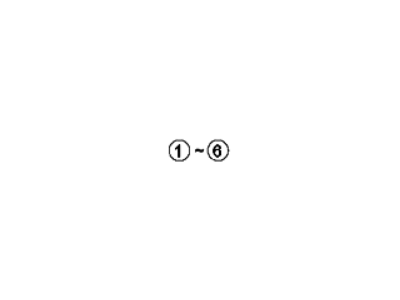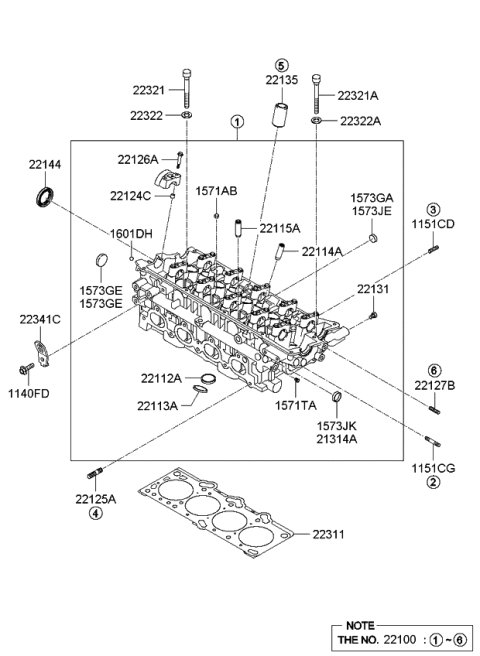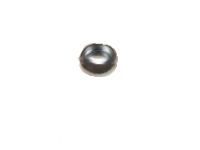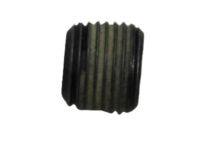In undertaking of this process, the engine must be cold to the least extent. For all other engines apart from the 2.0L DOHC, initial steps entail relieving the fuel pressure, with the permission to ground the negative terminal of the car battery, as well as disconnecting it, removing the spark plugs, flushing out the coolant from both the engine block and the radiator, and also draining the engine oil and taking out the oil filter in the process. Then disconnect the air intake duct and air filter housing, and then dismantle distributor on cars produced up to 1993, or the camshaft position sensor for a car built in the period from 1994 to 1997, or the emission control module on a car manufactured from 1998. Continue on the cylinder head and intake/exhaust manifolds, take off all electrical connections and harnesses connected to the cylinder head, and if applicable, the thermostat and water by-pass line. Take off the drive belts as well as the water pump pulley and then proceed to take off the timing belt covers and the timing belt it's self and finally the valve cover. Get rid of any other remaining parts that will hinder cylinder head extraction; proceed to extract the camshafts so as to reveal bolts of the head. Tighten the cylinder head bolts evenly by turning them around the block in a pattern clockwise and anticlockwise by a 1/4 turn and then fully unsticking them by turning them counterclockwise and lifting the cylinder head off the engine block recomending using a pry bar if it is lodged in place. Position the cylinder head on wooden block to restrict the gasket sealer surface and remove other related components to clean and inspect them. Choose the application of gaskets so that the mating surfaces of the cylinder head and block are absolutely clean, then use a gasket scraper and clean the surface with lacquer thinner or acetone. Search for any harm on the mating surfaces and the head bolt threads; ensure you do not remove metal from threads using a thread die. Replace those components extracted from the head by placing a new one and aligning it over the dowel pins; thereafter, lower the head on the block don't move the gasket. Pour the clean engine oil on the thread of the head bolts, screw them on until they are hand tight, then go on to tighten them according to the instructions, in stages, up to the requisite level of torque. The remaining installation procedures are in fact the reversal of the removal procedures, to add water to the cooling system, replace the oil filter, add oil to the crankcase, and check for leakage after running the engine, and finally, set the distributor timing for those models provided with this component. In regard to the 2.0L DOHC engine, it is possible to remove the head with the intake and exhaust manifold set if only the head gasket was replaced or cylinder block was serviced. First clear the coolant through the coolant drain plug, remove the upper connection of the radiator hose together with other hoses, if you intend to take off the cylinder head then you remove the spark plugs and their wires and the ignition coil also. Remove the valve cover and the timing belt cover after which you remove the timing belt together with the camshafts and the lifters. If you are pulling the cylinder head, remove the fuel rail and injectors, or just unplug the fuel injector connectors and stash the injector cables to the side/s if not removing. The associated procedures are to detach the power steering pump and the bracket and in some instances; it is required to eliminate the intake and the exhaust manifolds. Tighten the cylinder head bolts in the specified sequence cautiously to such a degree that they could easily be turned by hand. Replace the bolts. Raise the head off the block to confirm that there are no interconnections to it and pull out the gasket off the top block to have it compared to the new one. Scrub the mating surfaces of the cylinder head and block by feeling for roughness and checking for and preventing any grit from entering the oil or coolant galleries. If removed, then reinstall the intake and exhaust manifolds, clean out the cylinder head bolt holes, and ensure that the piston in the No. 1 cylinder is at the top dead center. Align the new head gasket on the block and then align the cylinder head and manifolds and then use oil on the threads as well as the lower area of the bolt heads and then tighten the bolts in a triangular pattern. Place the rest of the structures in their proper positions, connect the hoses that supply coolant, replace the lost coolant, change the engine oil and start the vehicle for the inspection of the leakage.
Posted by KiaPartsNow Specialist 








